Description
There is much mystery and uncertainty about the various vampire killing kits in existence
today. While some have clearly been assembled in the last 50 years as novelties, others
were made during a period in the 19th Century when there was a certain “vampire hysteria”,
largely as a result of Bram Stoker’s “Dracula”, but existing to some extent long before then.
While today most people might think of vampires as something from imagination, folklore,
and Hollywood, with no basis in fact, this was not the case in 19th Century Europe. Whether
they were ever used or not, vampire killing kits were actually assembled in the 19th C and
were not intended merely as a curiosity. When Bram Stoker first wrote his famous novel
“Dracula” (released on May 26, 1897), it was not originally intended as a work of fiction. His
research began in the summer of 1890 and he was collecting information on actual
occurrences. In the original preface, which was published in “Makt Myrkanna”, the Icelandic
version of the story, Stoker included this passage: “I am quite convinced that there is no
doubt whatever that the events here described really took place, however unbelievable and
incomprehensible they might appear at first sight. And I am further convinced that they must
always remain to some extent incomprehensible.” He also claimed that many of the
characters in the novel were real people, some of whom actually became his friends, whose
testimonies he never doubted. However, when he presented the original manuscript to his
editor, Otto Kyllman, of Archibald Constable & Company, it was returned with the single
word “no”. Kyllman believed that with the recent unsolved Whitechapel murders (of Jack
the Ripper fame) its publication might lead to mass hysteria. In order for the work to be
published, many of the events would have to be omitted and it would need to be rewritten
and presented as a work of fiction. In the final version the first 101 pages had been cut,
many alterations had been made, and the epilogue had been shortened, changing
Dracula’s ultimate fate and that of his castle. For more information see:
https://time.com/5411826/bram-stoker-dracula-history/
This kit, in a fitted baize-lined oak case with vacant brass escutcheon, features an
unmarked double-barreled percussion pistol with flask, unopened tin of percussion caps,
and bullets and patches in hinged oval tin. Also included is a silver-handled dagger with
cross and skull and crossbones stamped on the blade, wooden crucifix affixed with gilt
metal Christ, bottles labeled “Holy Oil”, “Consecrated Ground”, “Holy Water”, “Silver Nitrate,
and “Professor Blomberg’s New Serum”, single yew wood stake, prayer book, and a silver
tin with cross and rosary beads. Each of the bottles features remains of the original
contents. The inside of the lid features a large label with “Professor Blomberg’s Vampire
Killing Kit” and a list of the kit’s contents. Case dimensions 15″ long by 12 1/2″ wide, by 3
3/8″ high. Very good condition, the pistol with dark rust patina, lining showing age and
wear. A few scuffs and scratches to the case; brass lock lacking key. There are a number
of Blomberg vampire killing kits in existence, but we have never seen two that were exactly
the same. While there is no definitive date on this kit, the prayer book shows a calendar
beginning in 1837, but does not show a publication date. The pistol probably dates slightly
later.
In 2004, Sotheby’s sold a Blomberg kit for $26,400, although the catalog cautioned that
“Neither the existence of Professor Blomberg nor that of the gunmaker Plomdeur can be
confirmed. Also open to question is whether these kits were ever employed successfully in
the killing of vampires.” In 2011, an unsigned vampire-killing kit, with 32 components
including a map of Transylvania and no less than two crucifixes, brought $25,000 at
Sotheby’s. For a Blomberg kit that came up at Sotheby’s in 2012 and sold for $13,750, the
catalog described it as “Continental, circa 1900 and later” and had no comment on whether
the makers were fictional. The Royal Armouries in Leeds (UK) has a Blomberg kit in its
collection. Whether such kits were actually assembled for their stated purpose or merely
curiosities, the fact is that many have sold for very large sums of money and they make
their own history even as I write this description. The only Blomberg kit we have had
previously sold for $12,995.

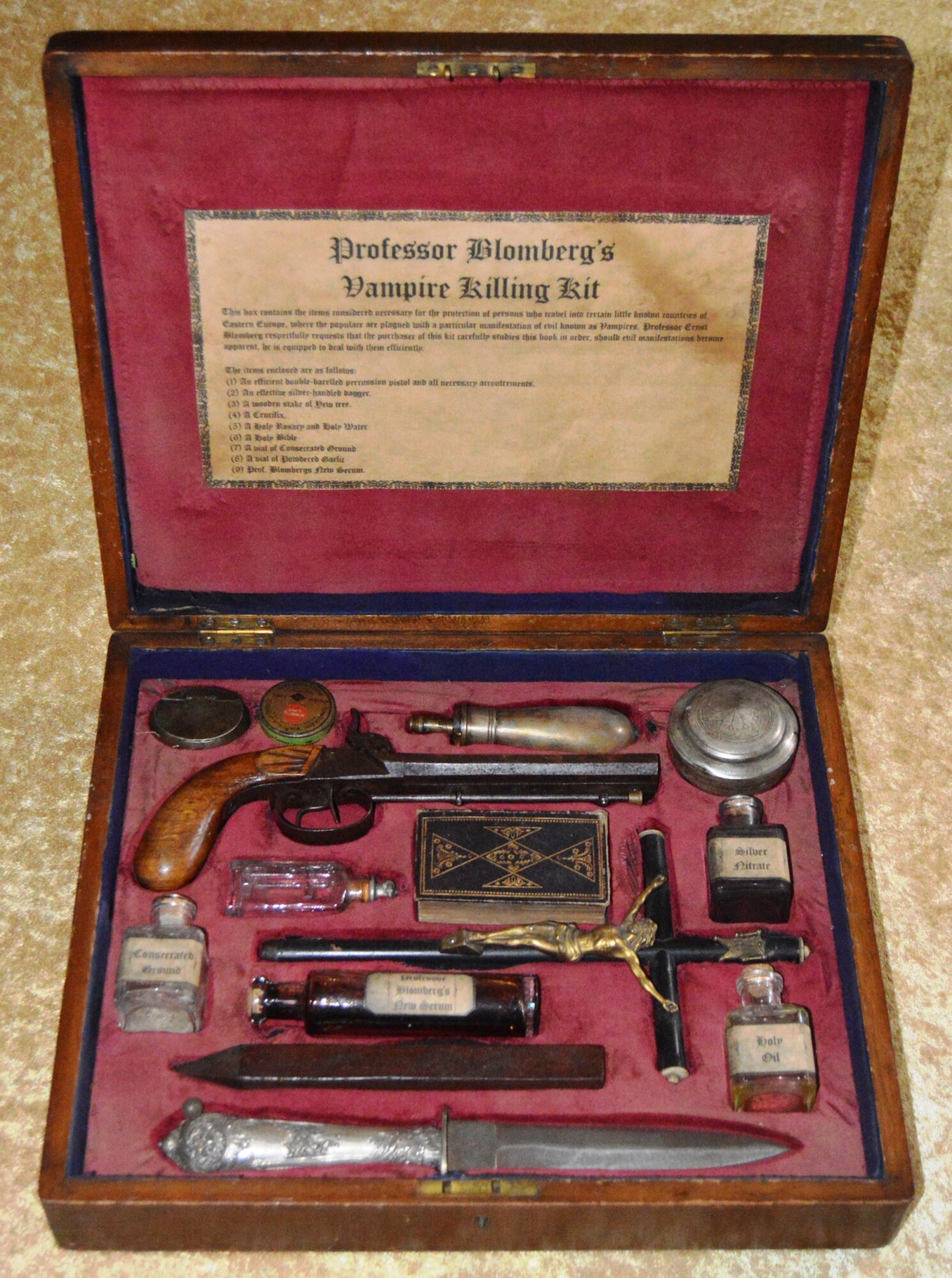
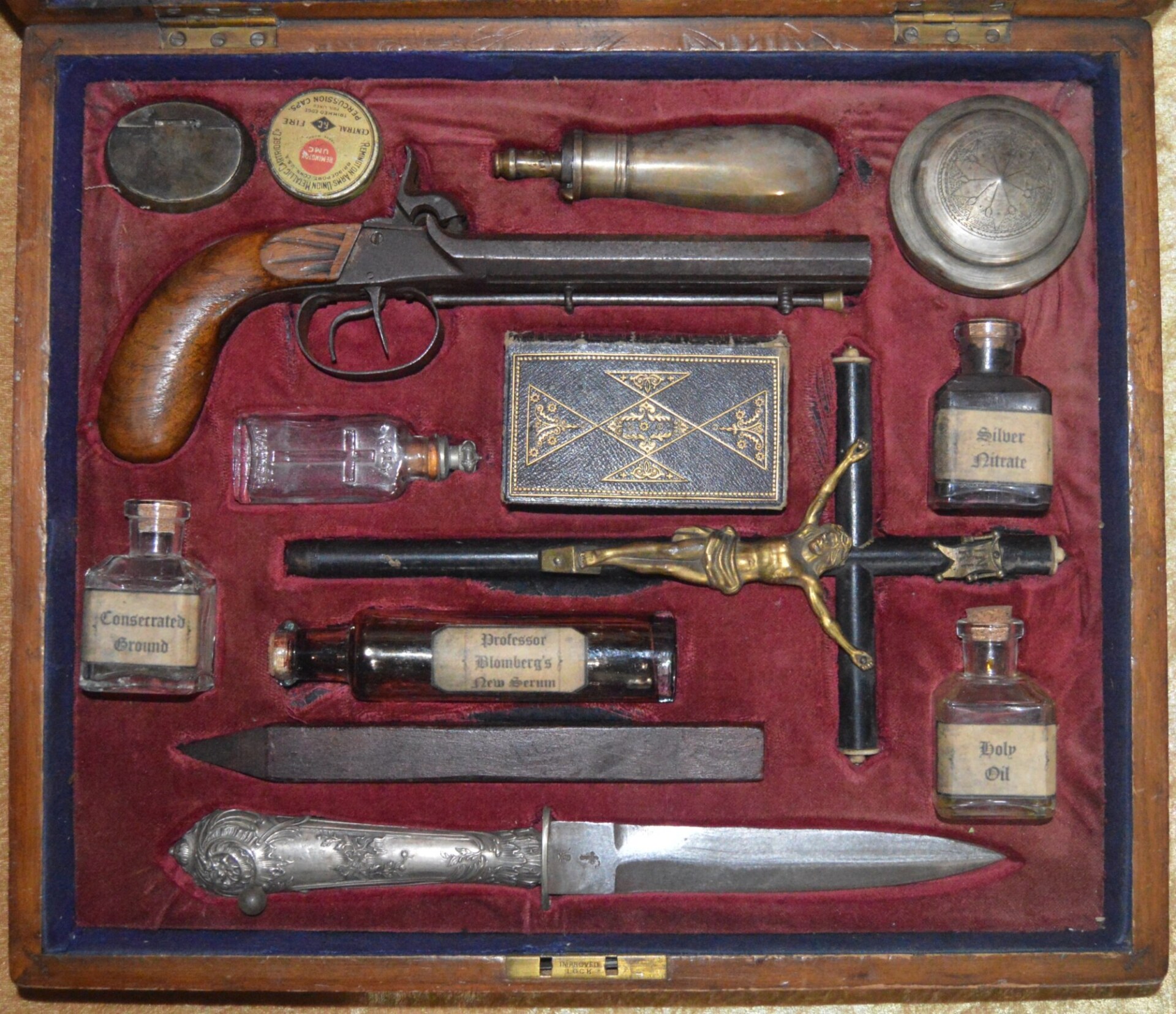
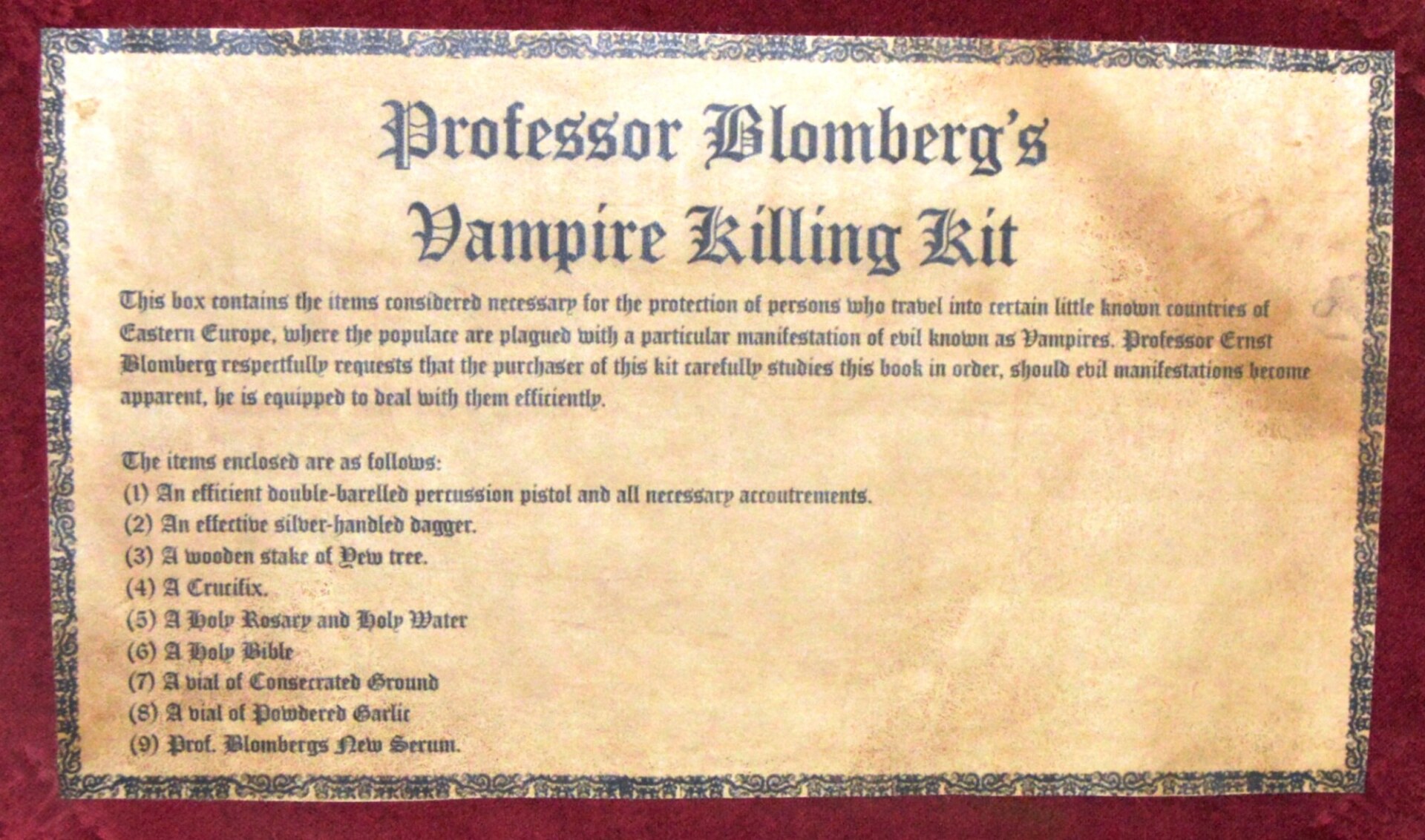
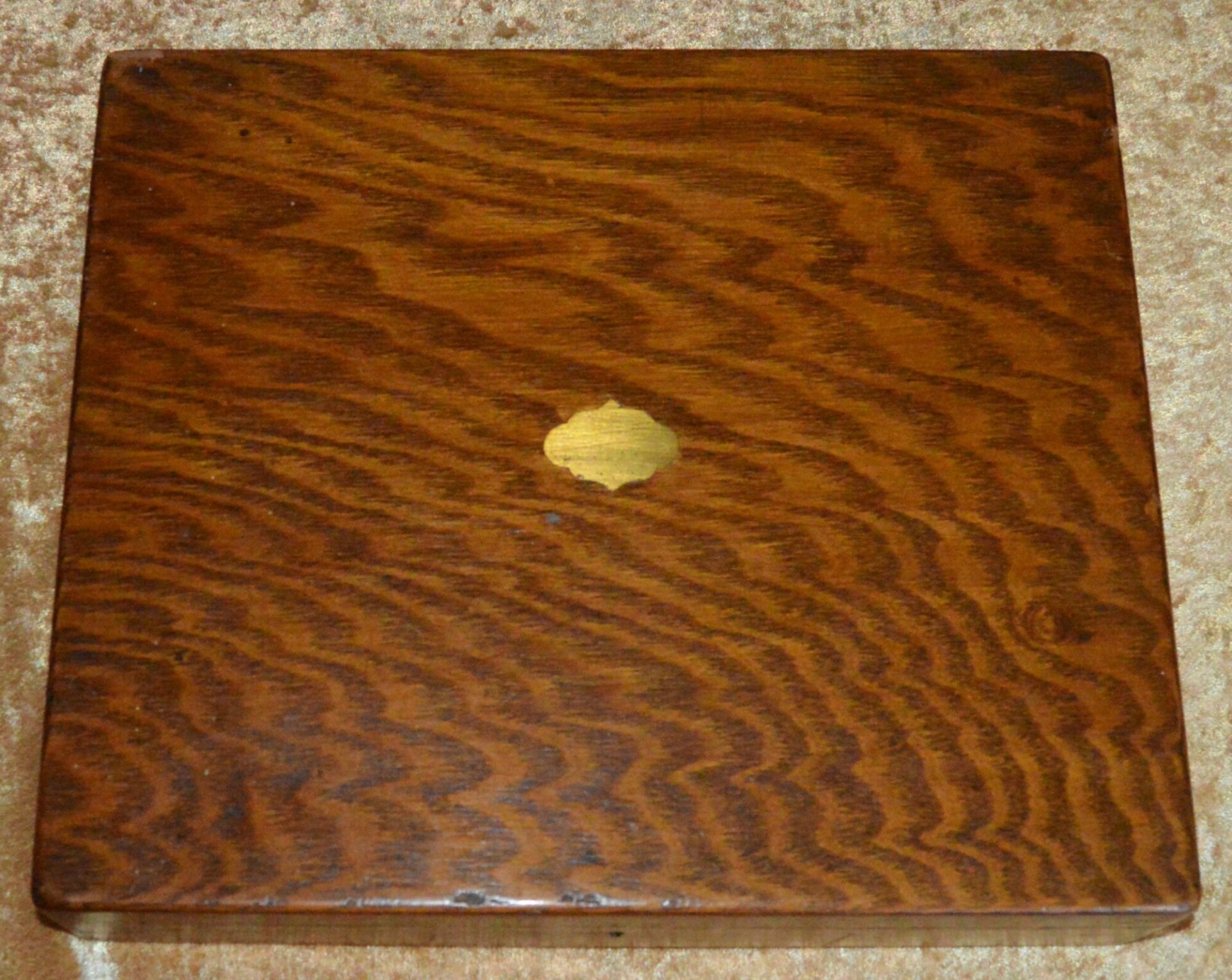
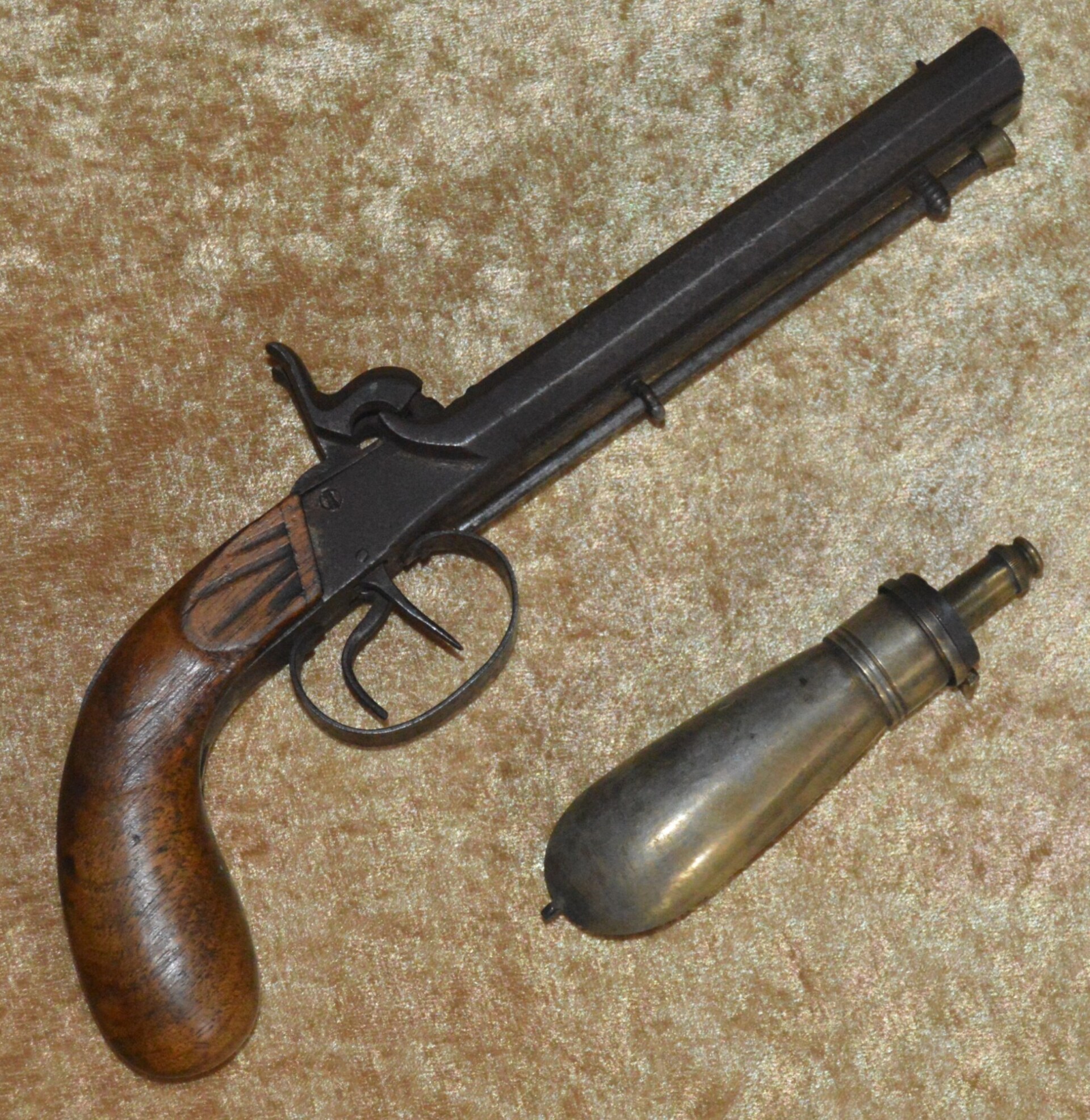
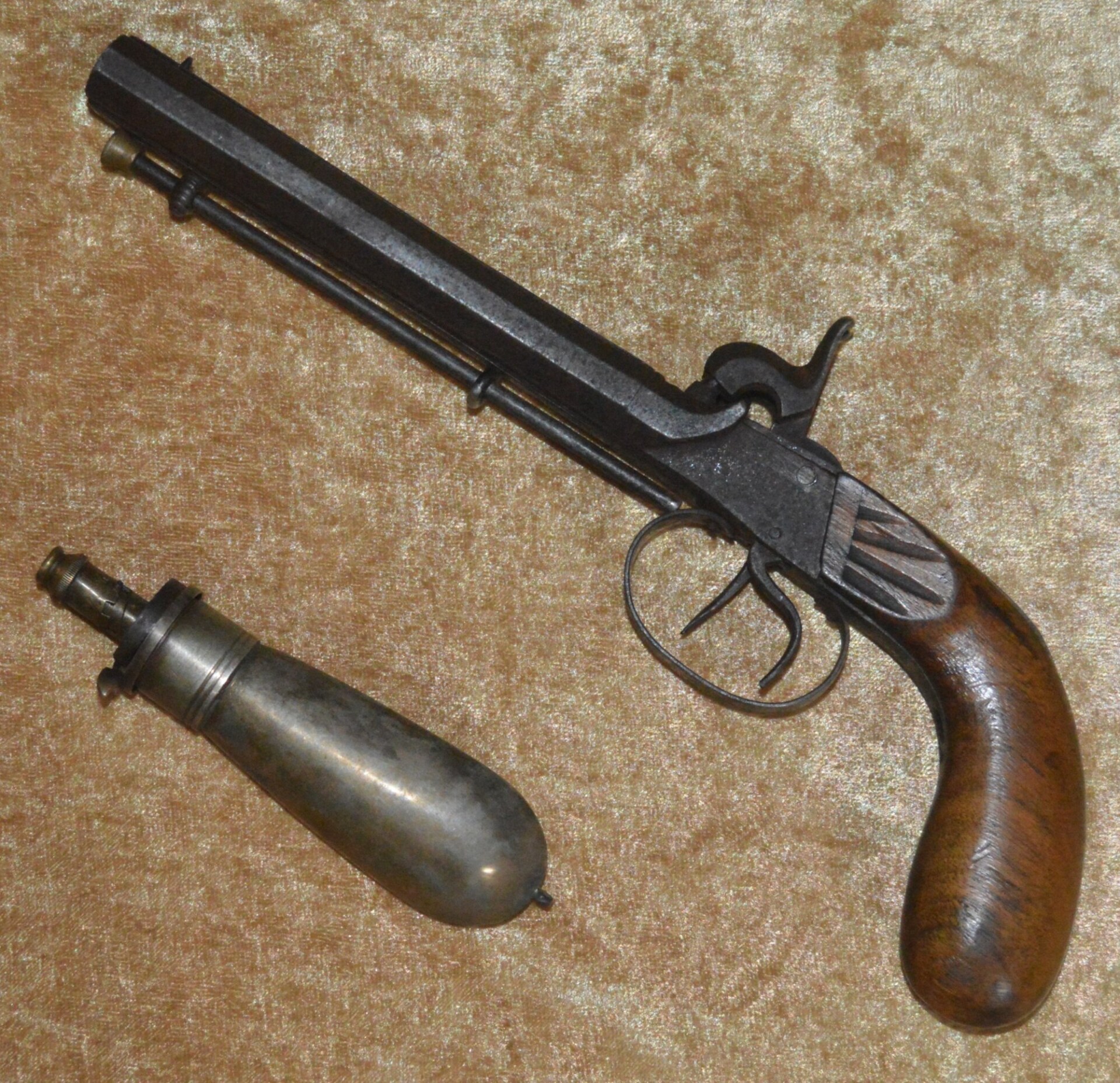
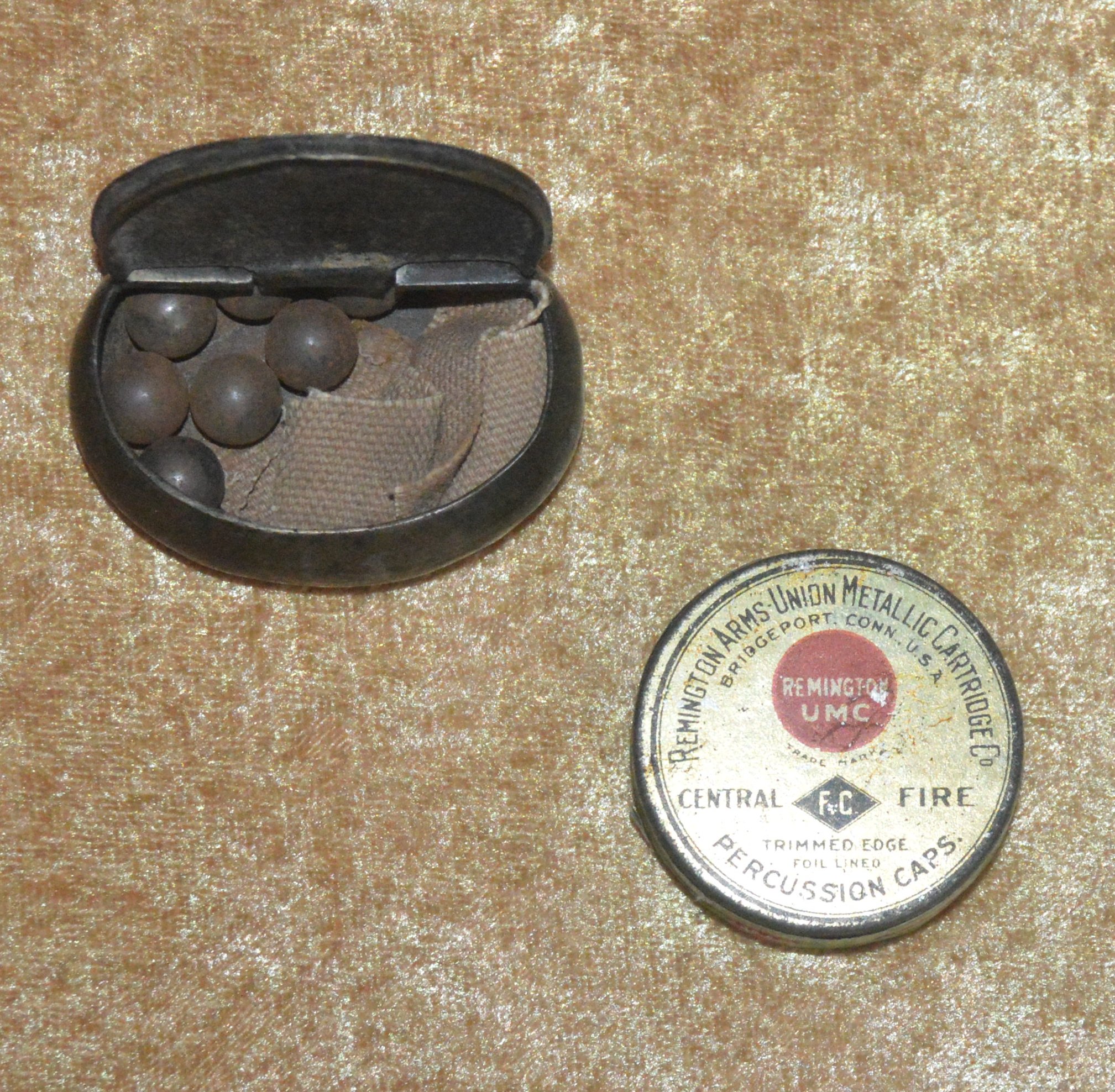
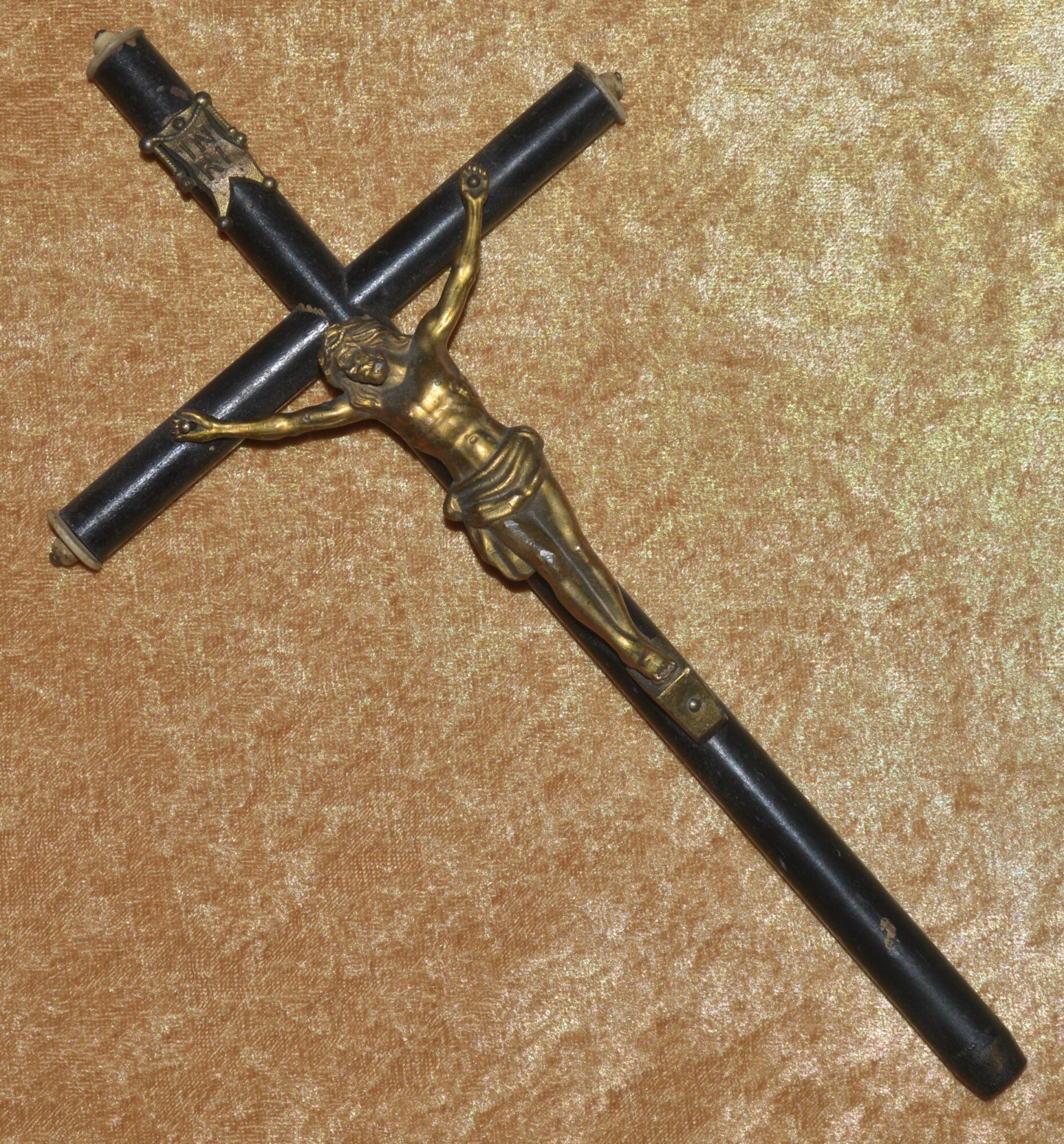
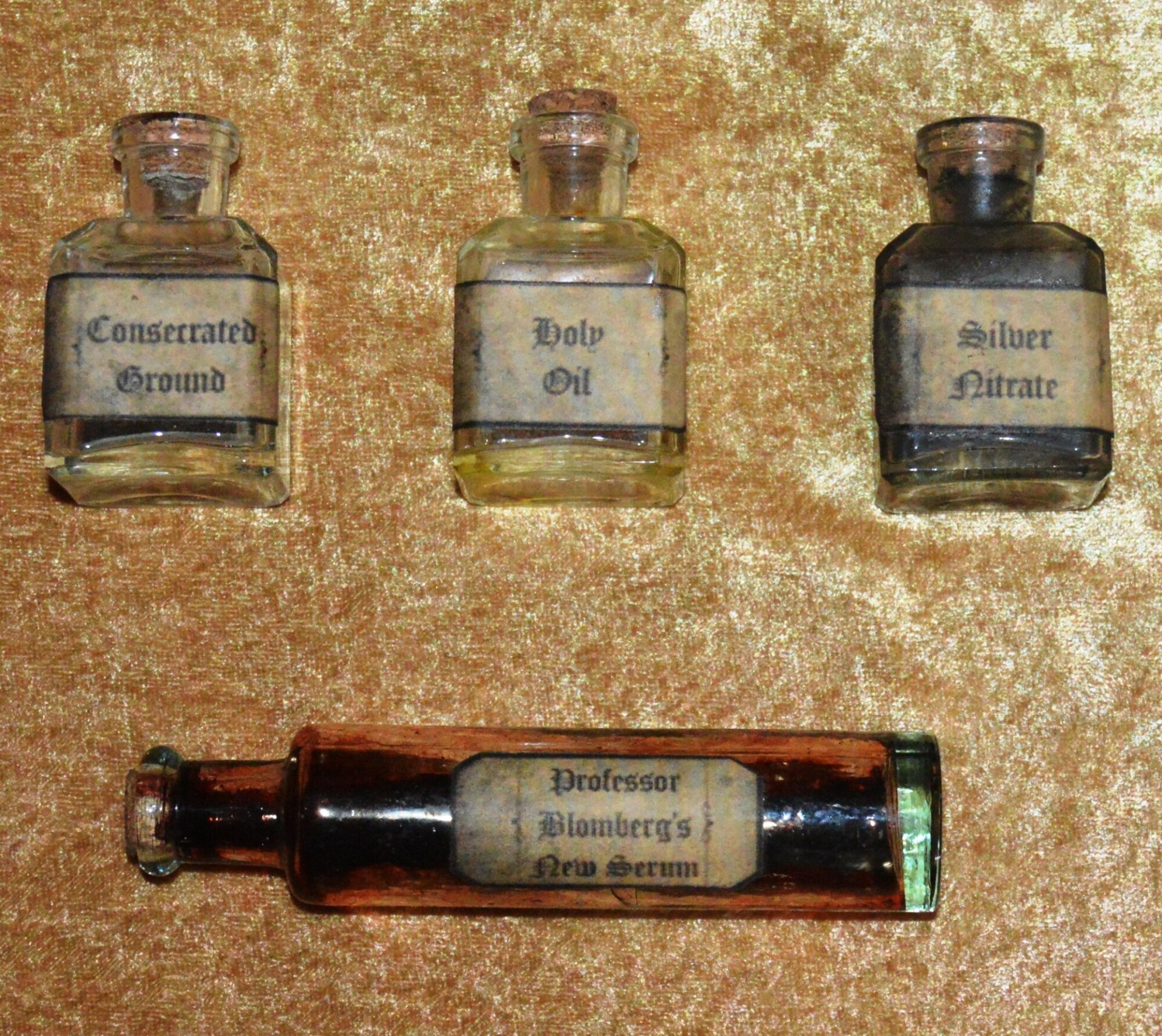
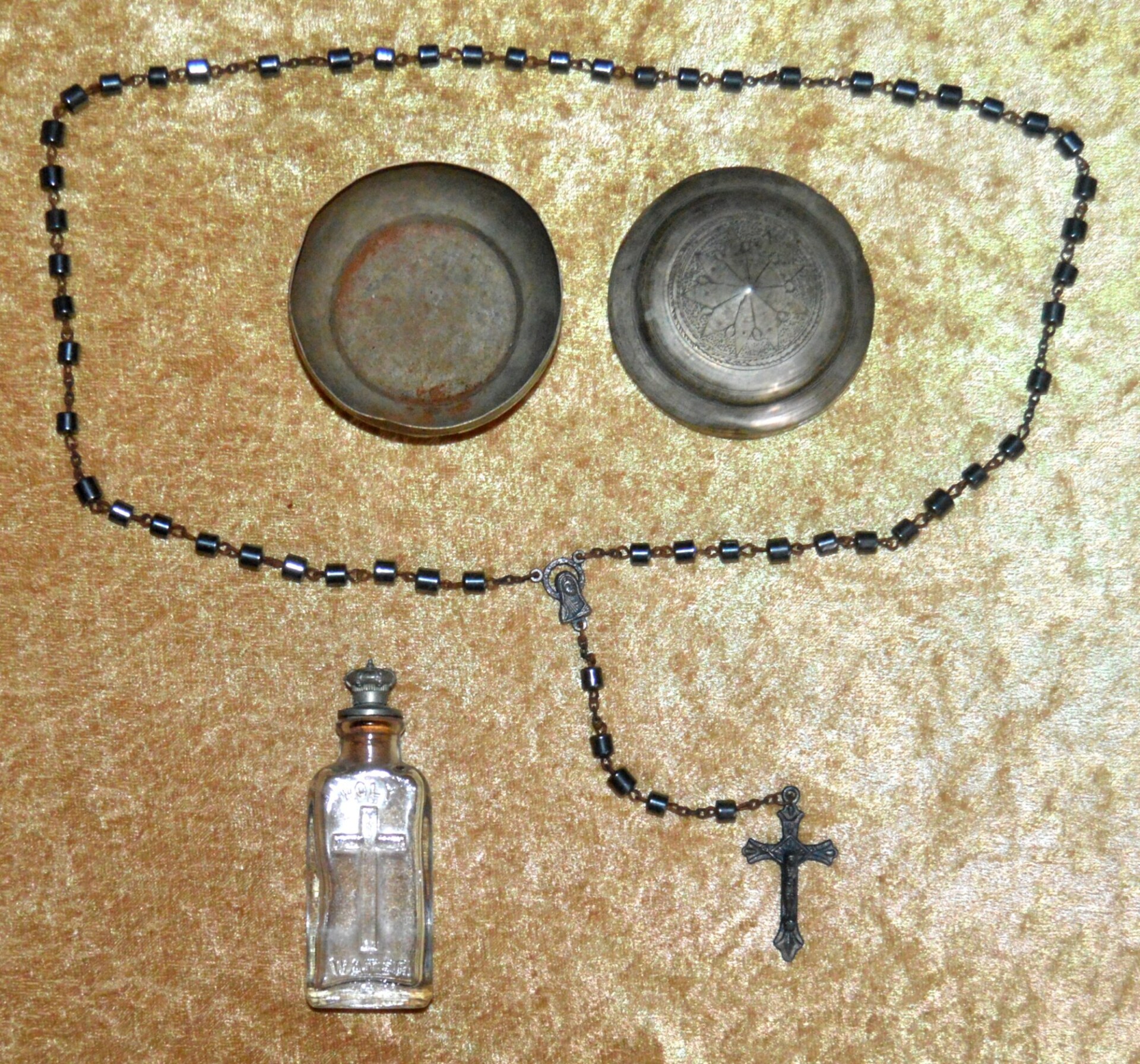

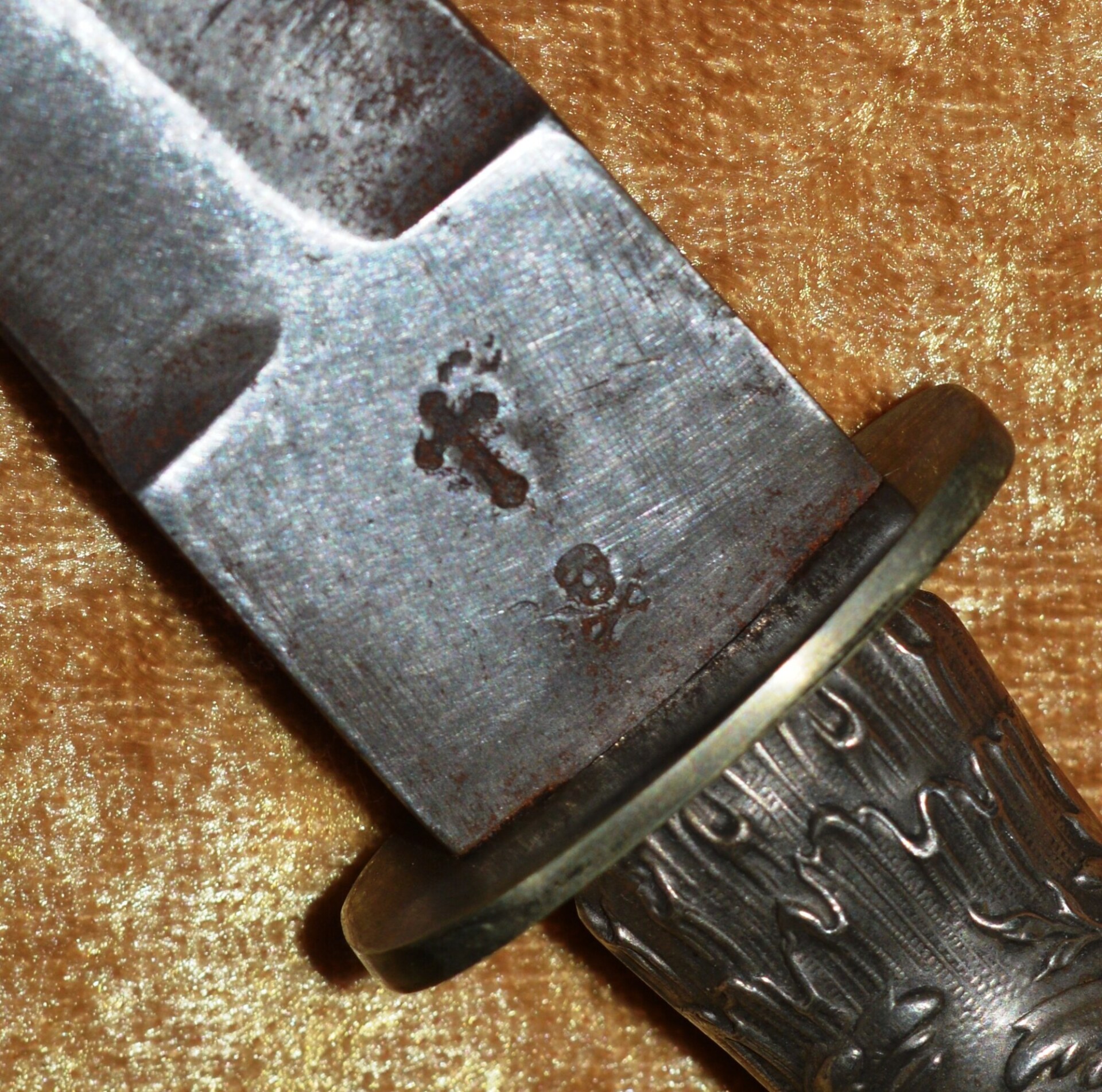
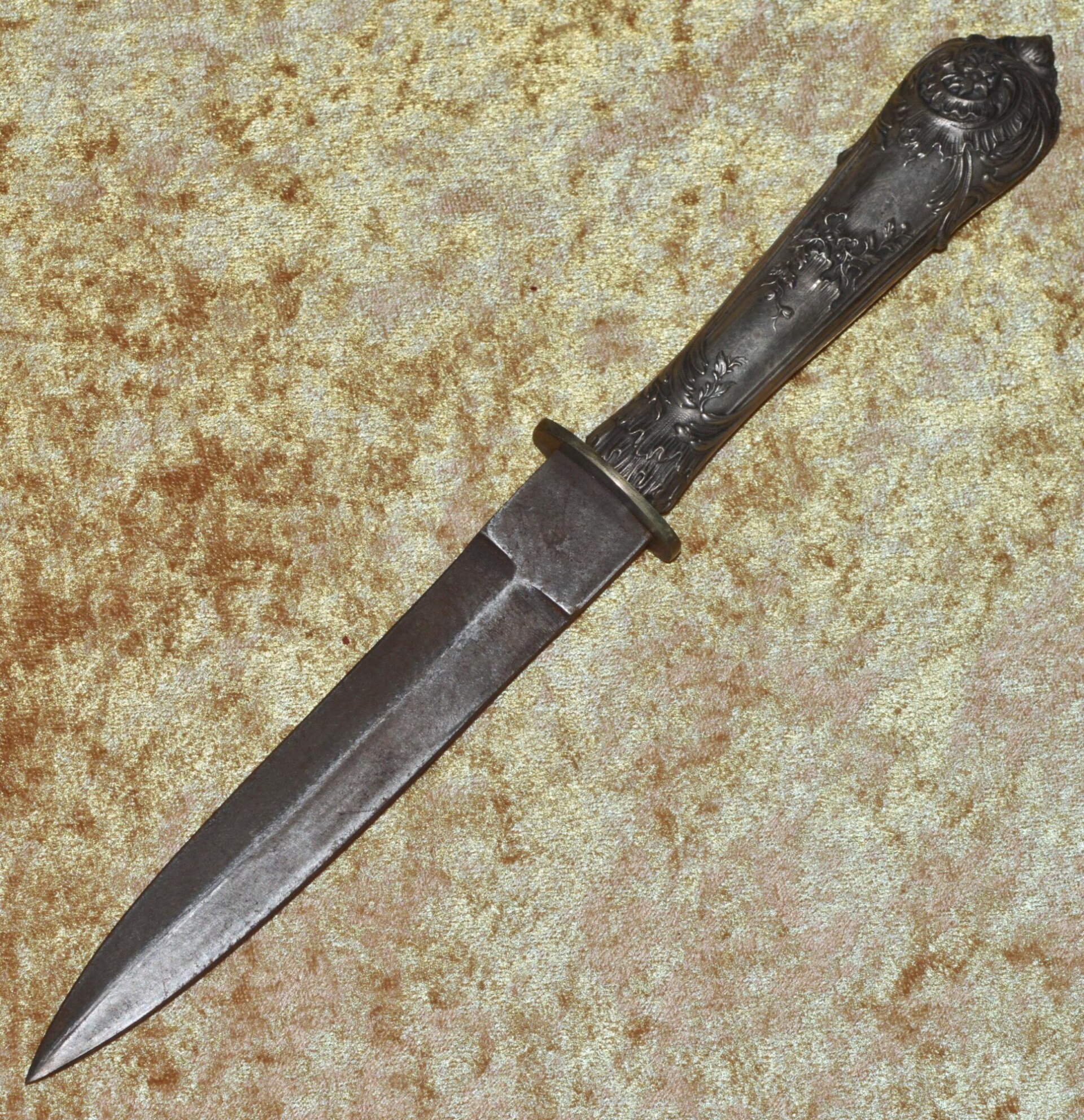
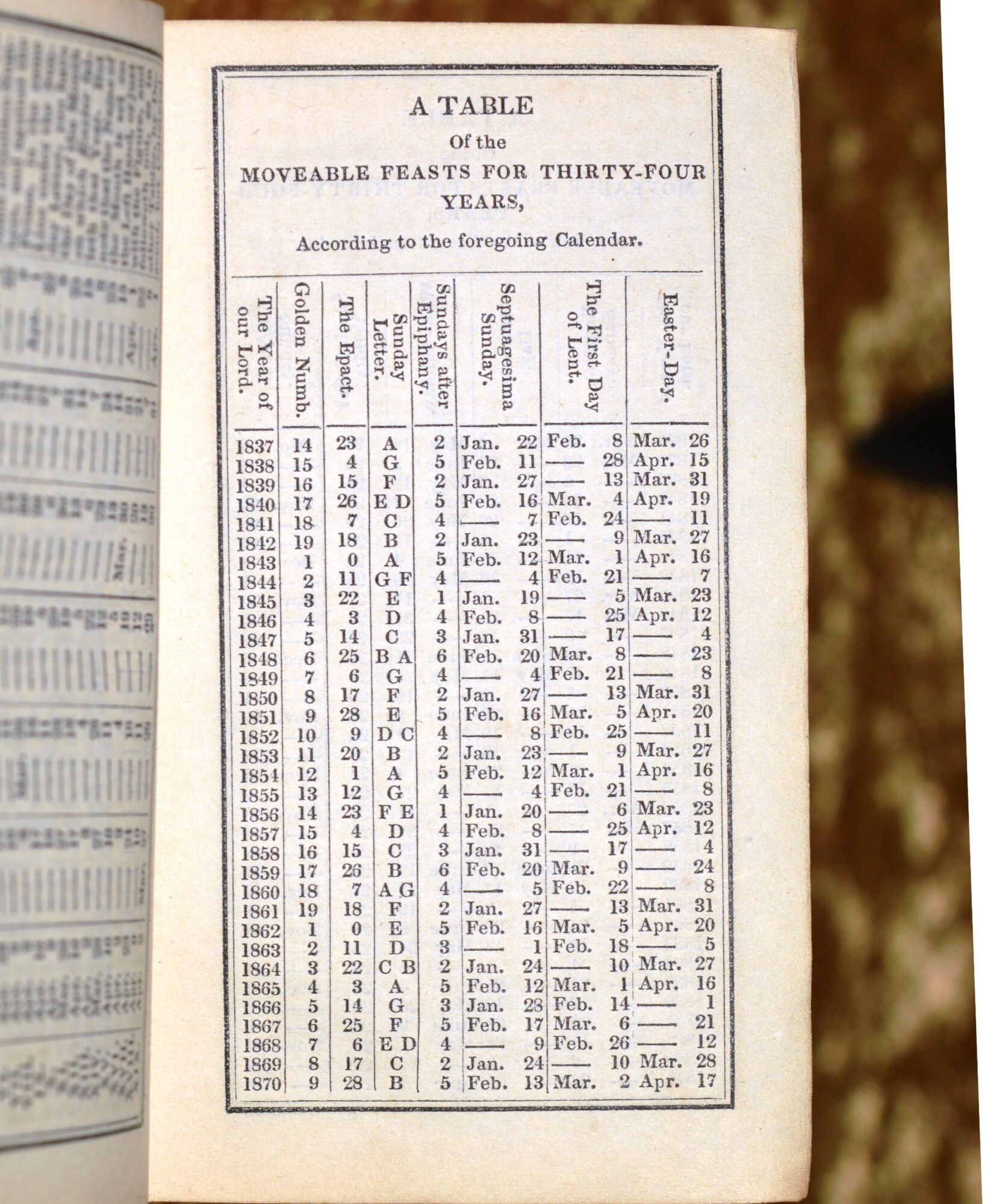
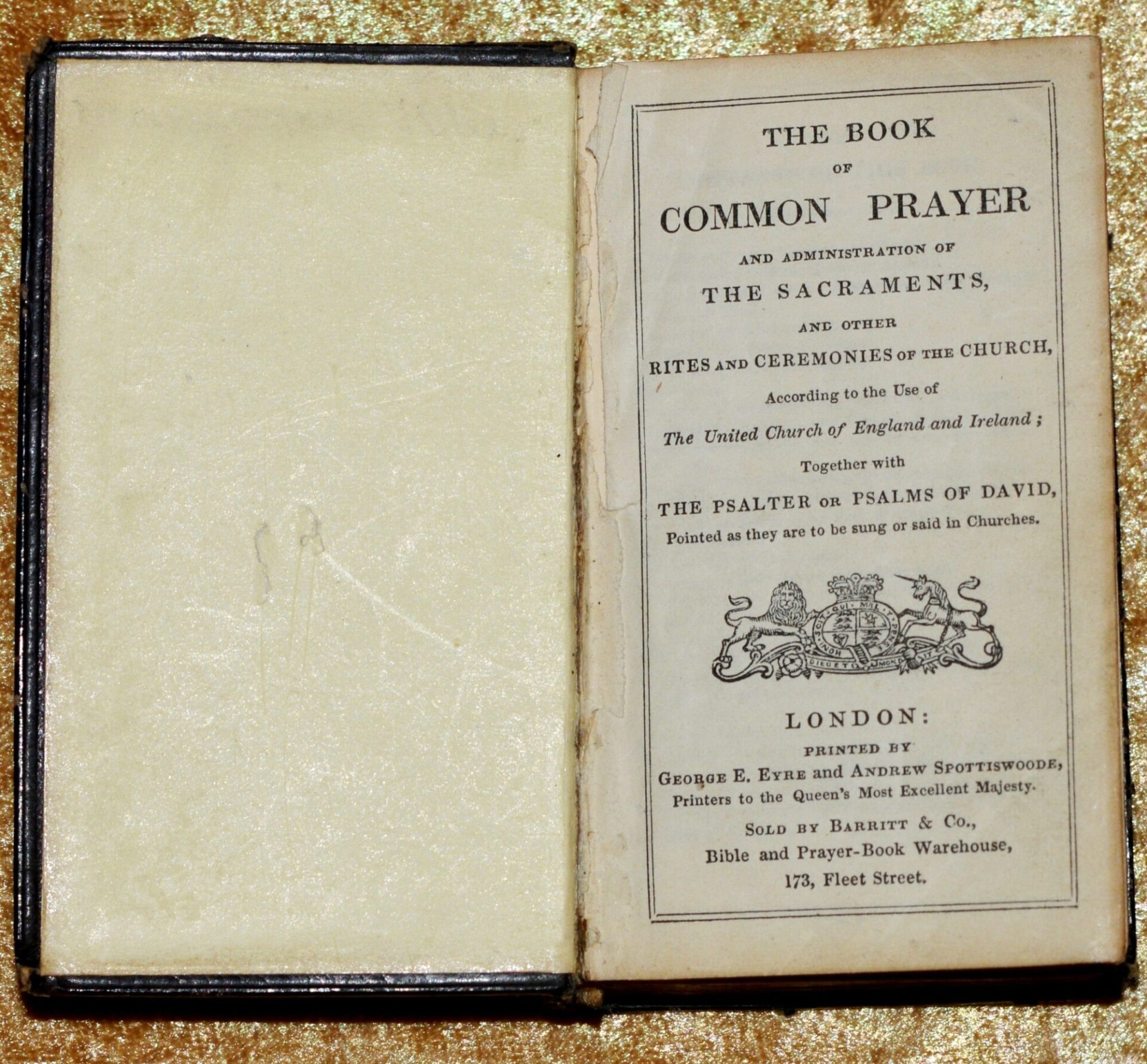
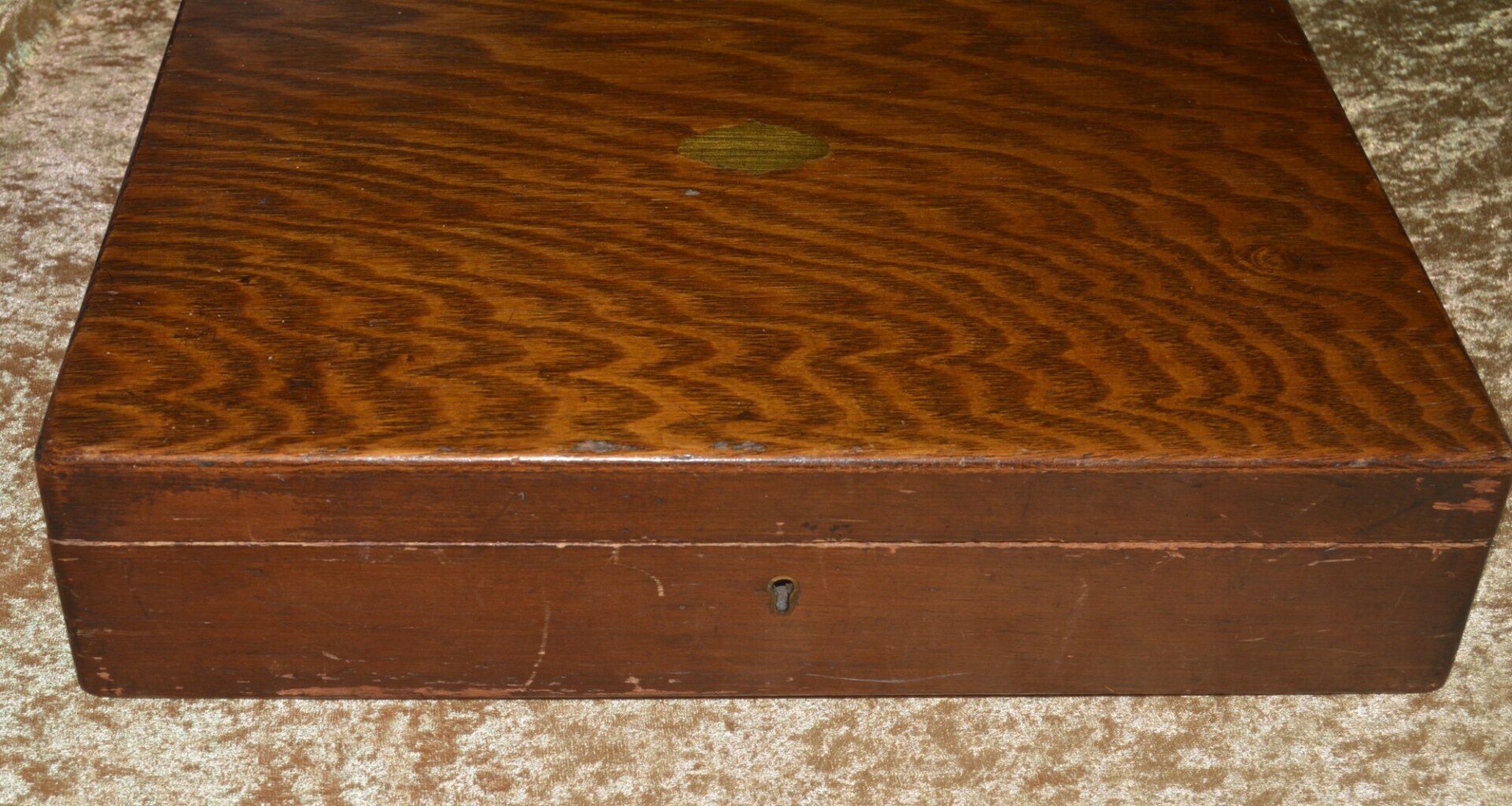
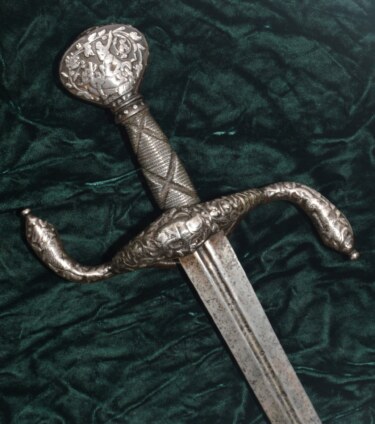 Silver Inlaid North European Rapier from Hever Castle, ca. 1630
Silver Inlaid North European Rapier from Hever Castle, ca. 1630 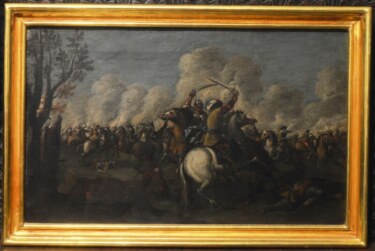 Oil Painting of Thirty Years War Cavalry Battle, ca. 1720
Oil Painting of Thirty Years War Cavalry Battle, ca. 1720 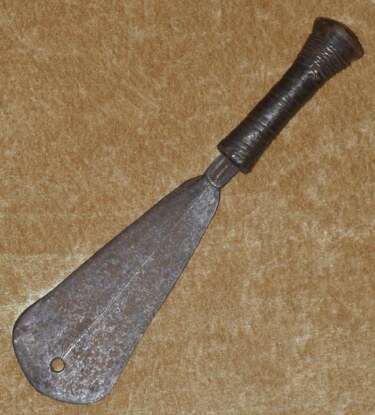 Central African Yakoma Club Knife, 19th C
Central African Yakoma Club Knife, 19th C  German Halberd, ca. 1560
German Halberd, ca. 1560